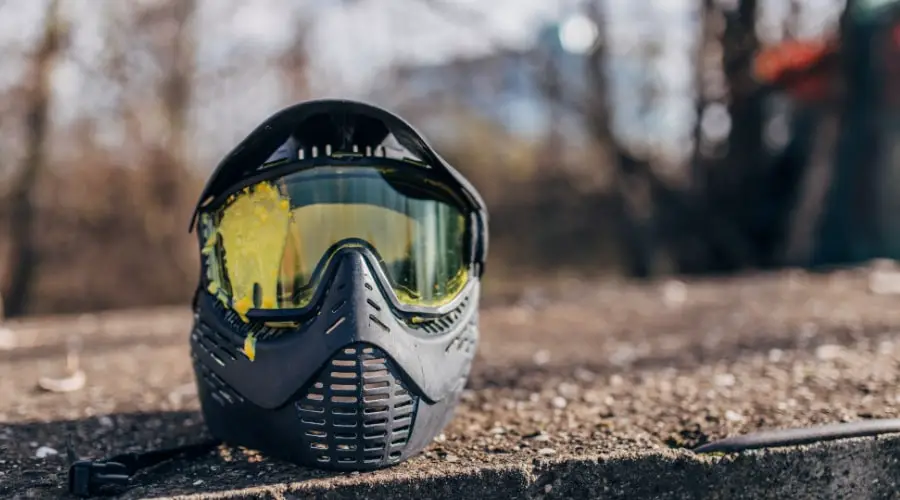Regarding safety, especially for bikers and cyclists, a well-fitted helmet is not an option but a necessity. Understanding helmet sizes, like what a 62 cm helmet size means, is crucial. Let’s dive into it.

Importance of Correct Helmet Size
A too-tight helmet can cause discomfort, while one too-loose might not provide sufficient protection in an accident. So, knowing your helmet size is essential for safety and comfort.
Measuring Your Head
The first step in finding the right helmet size is to measure your head circumference. Wrap a flexible tape measure around the largest part of your head—just above your eyebrows and ears.
What does 62 cm mean in helmet sizes?
In helmet sizes, 62 cm refers to the head circumference that the helmet is designed to fit. It typically corresponds to an extra large (XL) size, but this may vary slightly among manufacturers.
Types of Helmet Sizes
There are three main types of helmet sizes: Small, Medium, and Large. Each type is designed for a range of head sizes, measured in centimetres or inches.
Helmet Size Chart
Helmet Sizes in cm
Most helmet manufacturers provide a size chart to guide customers. For example, a 62 cm head circumference usually corresponds to an XL helmet.
Helmet Sizes in inches
For those more comfortable with inches, 62 cm is approximately 24.4 inches. This, too, usually aligns with an XL helmet size.
How to Choose the Right Helmet Size
Choosing the correct helmet size involves more than just measuring your head circumference. You also need to consider the helmet’s shape and your head shape.
Factors Affecting Helmet Fit
Head Shape
People have different head shapes – some are round, while others are more oval. Helmet manufacturers often design their helmets to fit a particular head shape.
Hair Style
Your hairstyle can also affect how a helmet fits. For instance, a big bun or ponytail can make a helmet fit differently.
Glasses
If you wear glasses, ensure the helmet fits well with them.
How to Adjust Your Helmet for a Perfect Fit
Most helmets have an adjustment mechanism to help you achieve a perfect fit. It might be a dial at the back or removable padding inside.
Why Some Helmets Might Not Fit Even with the Right Size
A helmet might not fit even if it’s the right size because of the
Why Some Helmets Might Not Fit Even with the Right Size
A helmet might not fit even if it’s the right size because of its shape or the individual’s head shape. For instance, a round-shaped helmet might not fit perfectly on an oval-shaped head, even if the circumference matches.
What to Do if You’re Between Helmet Sizes
If you find yourself in between sizes, opting for the smaller size is generally safer, provided it’s not uncomfortably tight. Remember, a loose helmet can compromise safety.

Common Mistakes When Choosing a Helmet Size
Many people choose a helmet that is too loose, thinking it’s more comfortable. Another common mistake is not adjusting the helmet for a snug fit. It’s crucial to avoid these mistakes to ensure maximum protection.
Safety Standards for Helmets
Helmets should meet specific safety standards, like those of the Department of Transportation (DOT) or the Snell Memorial Foundation. Always look for these certifications when buying a helmet.
Related: Which helmet is for 54 cm?
Frequently Asked Questions:
1. Can I wear a helmet that is one size bigger or smaller?
While settling for a slightly bigger or smaller helmet may be tempting, it’s not recommended. A well-fitted helmet is crucial for your safety.
1. Can I wear a helmet that is one size bigger or smaller?
While settling for a slightly bigger or smaller helmet may be tempting, it’s not recommended. A well-fitted helmet is crucial for your safety.
3. How often should I replace my helmet?
Even if your helmet looks fine, replacing it every five years is recommended. The materials can degrade over time, reducing its protective capacity.
4. What’s the difference between DOT and Snell certifications?
Both are safety standards, but Snell is considered more rigorous. Helmets with either certification offer good protection, but Snell-certified helmets provide the highest level of safety.
5. Can I use a motorcycle helmet for cycling or vice versa?
While both types of helmets aim to protect your head, they’re designed differently because of the risks involved in motorcycling and cycling. It’s better to use the helmet designed for your specific activity.
Conclusion
Choosing the correct helmet size, such as understanding what a 62 cm helmet signifies, is crucial for your safety and comfort when biking or cycling. By measuring your head circumference, understanding the different factors affecting helmet fit, and referring to the manufacturer’s size chart, you can find the perfect helmet for you.
Helmetslab is a website that focuses on providing in-depth reviews and information about different types of helmets, including motorcycle helmets and others helmets. I am writing a post with proper research on the info that helps helmet users.

